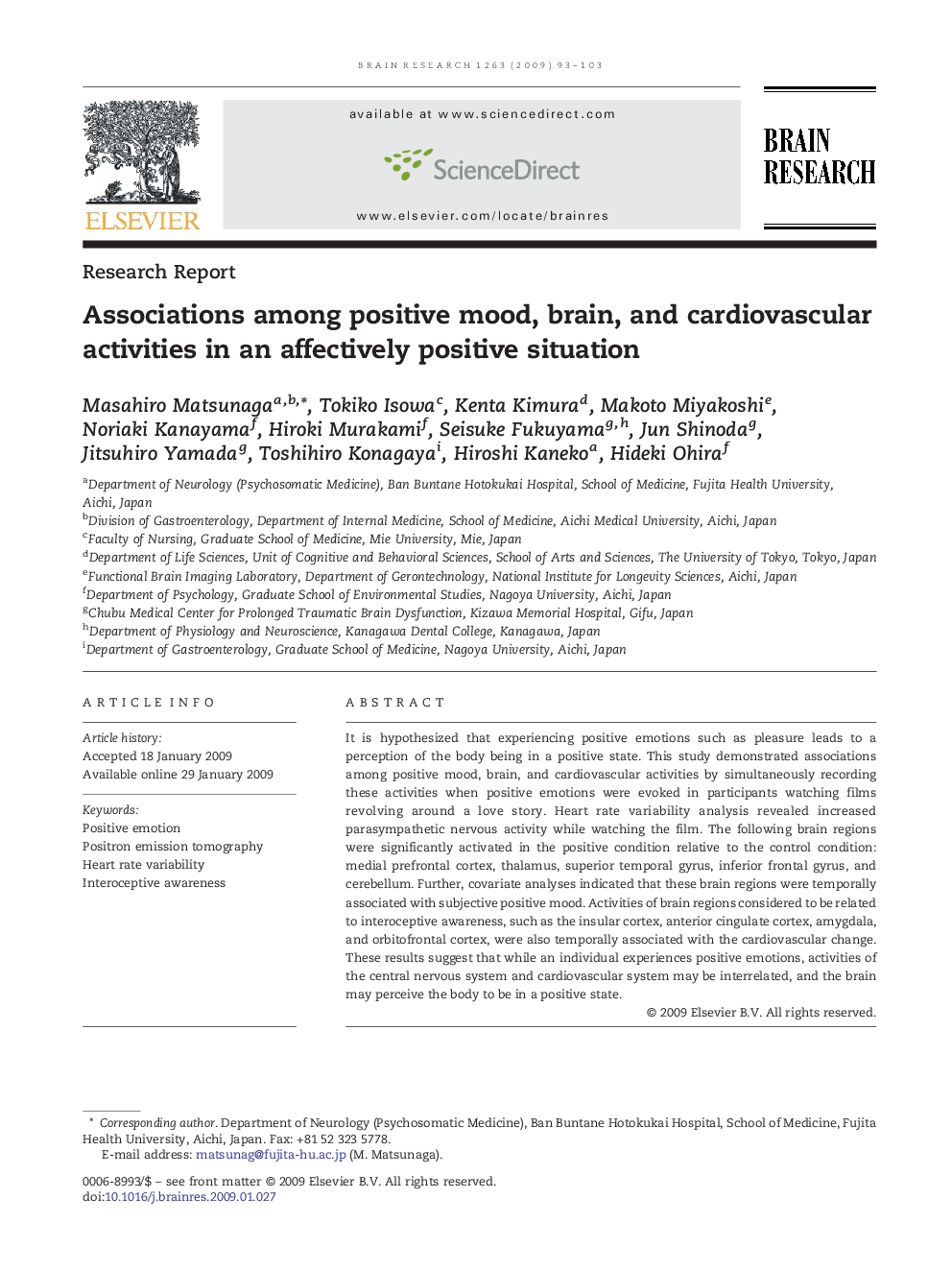| Article ID | Journal | Published Year | Pages | File Type |
|---|---|---|---|---|
| 4328399 | Brain Research | 2009 | 11 Pages |
It is hypothesized that experiencing positive emotions such as pleasure leads to a perception of the body being in a positive state. This study demonstrated associations among positive mood, brain, and cardiovascular activities by simultaneously recording these activities when positive emotions were evoked in participants watching films revolving around a love story. Heart rate variability analysis revealed increased parasympathetic nervous activity while watching the film. The following brain regions were significantly activated in the positive condition relative to the control condition: medial prefrontal cortex, thalamus, superior temporal gyrus, inferior frontal gyrus, and cerebellum. Further, covariate analyses indicated that these brain regions were temporally associated with subjective positive mood. Activities of brain regions considered to be related to interoceptive awareness, such as the insular cortex, anterior cingulate cortex, amygdala, and orbitofrontal cortex, were also temporally associated with the cardiovascular change. These results suggest that while an individual experiences positive emotions, activities of the central nervous system and cardiovascular system may be interrelated, and the brain may perceive the body to be in a positive state.
